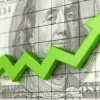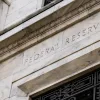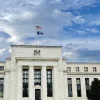Mortgage Rates Today, Jan. 15, 2025: Today's Important Inflation Report
This morning's consumer price index might leave mortgage rates unchanged. Or it could send them appreciably higher or lower.

This morning's consumer price index might leave mortgage rates unchanged. Or it could send them appreciably higher or lower.

Experts tell you to shop for mortgage rates. But it could put your homebuying at risk. How do you shop lenders when buying a house?

As expected, the Fed cut its key interest rate by 0.25%. But mortgage rates might rise due to new Fed guidance for 2025.

Trump told rally-goers in Arizona that mortgage rates would fall to 2% during his presidency. Is that anywhere near possible?

Many homeowners who purchased since September 2022 might save money with a refinance, thanks to falling mortgage rates.

Falling mortgage rates have equated to an estimated $300-per-month drop in the mortgage payment on a $350,000 home.

Mortgage rates have steadied since last week's roller coaster. But another important report is about to be published that could again take rates for a ride.

Two highly significant events this week have the potential to set mortgage rates moving up or down for months to come.

A mortgage rate lock captures a rate on a specific day. But when should you lock when buying or refinancing a house?

The Fed could look to cut rates in September, but only if inflation numbers cooperation, some of which come out Friday.

Mortgage rates are driven by inflation and other economic data. But one factor is influencing them more than normal: low demand for government debt.

It will likely be a calm week for mortgage rates -- that is, until Friday rolls around.

Many homebuyers who missed the last mortgage rate rally wonder if low rates will ever come back. Can rates fall to 3%?

The 2024 Presidential election could impact mortgage rates. How would mortgage rates fare under each candidate?